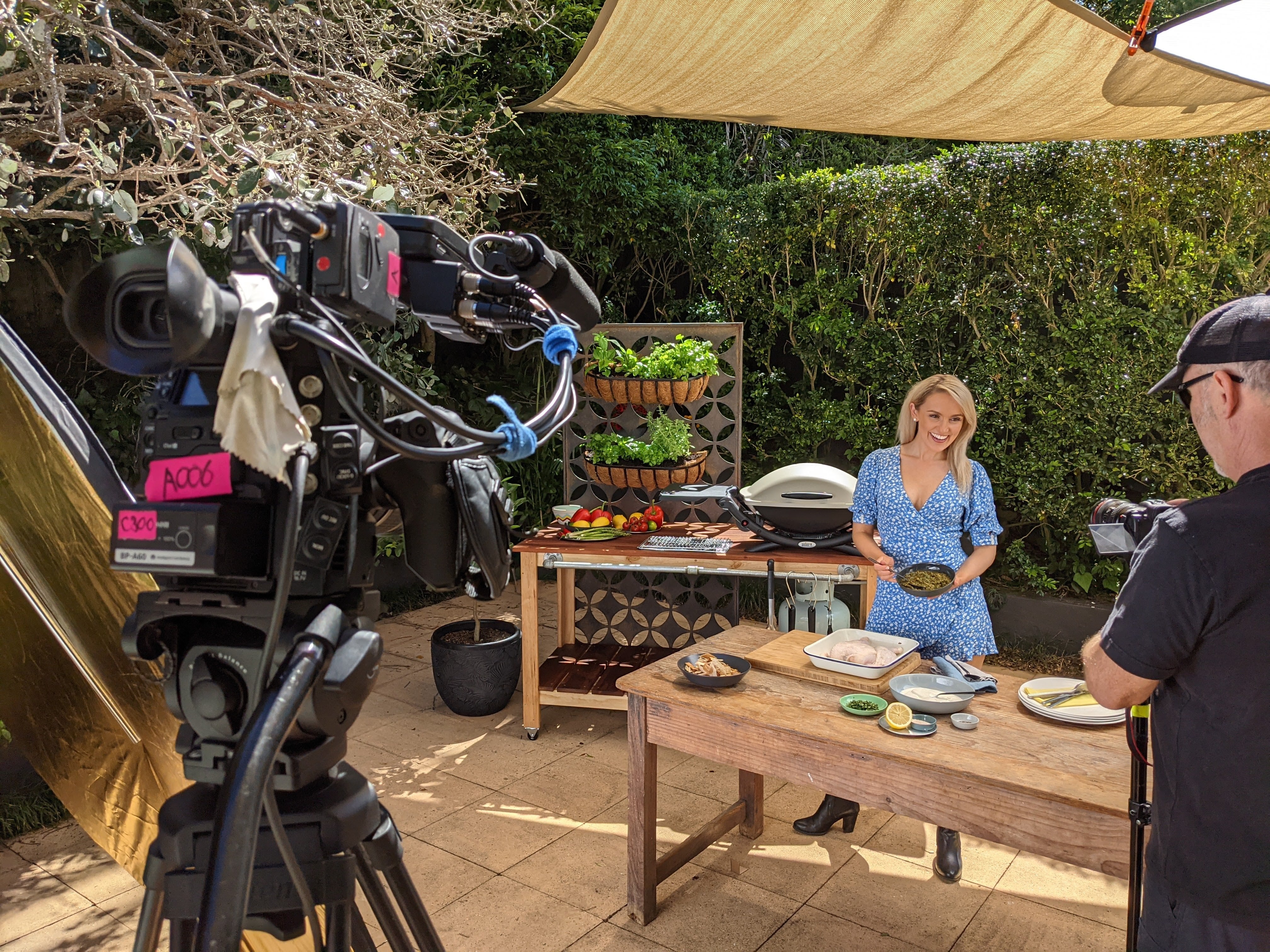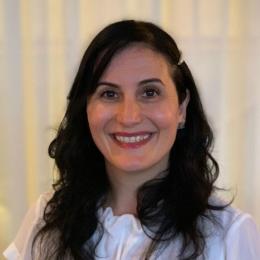The UN International Panel on Climate Change’s latest report “is a dire warning about the consequences of inaction,” said Hoesung Lee (IPCC Chair). “It shows that climate change is a grave and mounting threat to our well-being and a healthy planet. Our actions today will shape how people adapt and nature responds to increasing climate risks.”
Dr. Jane Goodall, in The Book of Hope, acknowledges that “many people understand the dire state of the planet — but do nothing because they feel helpless and hopeless.”
How can we take action in such overwhelming circumstances? The first step — cultivating hope. Dr. Goodall describes hope as “a human survival trait … without it we perish. She stresses that hope is not “passive wishful thinking,” rather, “real hope … requires action and engagement.”
To learn more about how we can cultivate hope, I spoke with Katrina Bullock, general counsel at Greenpeace Australia Pacific. Bullock’s team is part of the governance and performance team, focusing on everything from governance and general legal advisory work to movement lawyering (where legal strategies are used to enhance campaign outcomes). Her work supports the actions Greenpeace takes.

Bullock said, “I must admit with the release of the latest deeply concerning UN IPCC report on climate change, the topic of hope has been at the forefront of my mind.”
On the night of the report’s release, Bullock recalls Greenpeace Australia Pacific’s CEO (a former lawyer himself) David Ritter’s words that while we can never entirely know the future: “There is potential and life and hope in the unknown of the future, and our role is to go forward into the dark with purposeful intent” and “to seek the possibility of an earth of future thriving.”
Is hope something we are born with, or is it “a skill — one that you can get better at?” Mindfulness teacher George Mumford argued hope is something we play an active role in.
What is hope?
People often say, “I hope you have a great day.” Gwinn and Hellman (in Hope Rising) argue this is not hope; it is a wish. Hope, they say, is more than a belief that your future can be better and brighter. It is also the belief that you have a role to play in making it better. Psychologist Chan Hellman separately stated that hope, being about taking action to achieve goals, is measurable and, therefore, predictive of later success.
The late Charles R. Snyder developed the hope theory (Psychology of Hope) identifying three components:
- Having goals: Knowing what you want;
- Pathways thinking: Finding the routes/ways and plans of how to achieve your goal; and
- Agency: The willpower/motivation to get what you want and sustain the journey to the goal.
It is the confidence and belief that you can make things happen and overcome obstacles. Gwinn and Helman cited Dan Millman’s “willpower is the key to success. Successful people strive no matter what they feel by applying their will to overcome apathy, doubt, or fear.”
Gwinn and Hellman described the hope theory through a minivan analogy — where goals are the destination of your journey and agency is the van's engine you use to navigate your pathways.
They noted:
- The challenge is our finite willpower, which gets depleted and leaves us with mental fatigue.
- Motivation is key, and “your level of agency/motivation may depend very often on having cheerleaders and social support groups to pursue your goals.”
- Hope does not ignore difficulties — it just doesn’t let us give up in the face of them.
- Hopeful people have learned strategies to “put burdens in the back of the van” to limit any distraction.
What happens in our brains when we find hope?
The late Professor Martin Seligman (The Hope Circuit) discussed hope on the podcast All in the Mind. Seligman, whose early work focused on learned helplessness, said “the dorsal raphe nucleus is probably the seat of helplessness” and that the “hope circuit,” the part of the brain “activated by hope, by mastery, by anticipation of control … turns off the hopelessness of the dorsal raphe.”
Psychological studies also show how hope changes our brains and improves our lives.
Gwinn and Hellman review emerging literature on hope and its importance at work. Their findings show that hopeful employees set more goals (including more complex goals), are better at critical thinking and problem solving, are more energetic in their pursuit of goals, are more likely to experience success in goal attainment, and report higher levels of job satisfaction and commitment to the company. Hopeful leaders in companies are “more likely to be inspirational, visionary, and concerned with employee well-being.”
In one meta-analysis, psychologist and author of Making Hope Happen, Shane Lopez PhD, found that employees with higher hope take less time to do the same amount of work in a day as employees with lower hope. Discussing this work with the Chicago Tribune, Lopez stated:
Hope is equal to about a day’s worth of productivity … we meta-analyzed 50 studies looking at all types of productivity around the world, whether it’s selling things you make or making widgets or mortgage brokers closing loans. Folks are 14 percent more productive if they’re hopeful. That has huge implications for folks in the workplace, whether it’s a boss trying to raise productivity or a worker trying to meet their own goals.
In another study, psychologists at the University of Leicester observed students over three years and found that the more hopeful students did better academically and hope matters more than intelligence, personality, and even prior academic achievement.

Hope is also in other positive psychology theories. Hope is also one of the 10 positive emotions identified by social psychologist Dr. Barbara Fredrickson in her broaden and build theory — which, among other things, allows us to broaden the number of possibilities we process. It is also one of the 24 VIA Character Strengths and is described as “an action-oriented strength involving agency, the motivation and confidence that goals can be reached, and also that many effective pathways can be devised in order to get to that desired future.”
Gwinn and Hellman argue that hope is an important psychological strength because it:
- Buffers the effects of adversity and stress and serves as an important coping resource;
- Predicts adaptive thoughts and actions (hopeful people have better outcomes connected to the way they think and behave); and
- Can be learned.
That hope is a skill we can leverage to help us find solutions, take action and achieve our goals resonates with Bullock. She shares:
Jasper Teulings, the former general counsel of Greenpeace International, taught me that as lawyers working on environmental issues of public concern, we have a professional duty to be hopeful. To maintain hope. To meet people where they are, but to always project a vision of the world as it could be. You need to actively maintain that vision of hope in order to work towards it.
If maintaining a sense of hope is key, how can we develop it?
Find out how hopeful you are
In 2000, Snyder conducted a live experiment on Good Morning America asking the show’s host, a medical expert, and the weatherman to dunk their right fist into a tank of freezing water for as long as possible. The host lasted the longest. Snyder later revealed the three men had taken a hope-scale test before the show, which accurately predicted how long each would withstand pain, with the host having the highest hope score.
The Adult Hope Scale measures an individual’s overall hope disposition. Snyder developed the scale to measure both agency and pathways thinking toward goals. Four items reflect the agency (willpower) for the past, present, and future goals. Four items reflect the pathways or mental roadmaps toward goal attainment. Four items are fillers. Take the test and see your hope score. If you have a low score, you can work on developing your hope.
How to develop hope
The American Psychological Association shared Lopez’s three basic ways to build hope:
- Futurecasting: Think of a specific future goal in a way that makes it come alive (e.g., taking pictures that represent the career you desire).
- Work toward the goal: Create the pathways (e.g., taking classes or revamping a resume for your dream job).
- Plan for contingencies: Identify many ways to overcome obstacles.
In an interview with the Chicago Tribune, Lopez also suggested spending time with hopeful people because hope is contagious: “When you spend time with hopeful people, they show you the ways. Most people aren’t low on will and they’re not low on goals; they’re low on ways.”
He recommends editing your life and finding the one or two goals that really matter to you. We should start investing in those one or two goals because we only have finite resources.
Bullock’s suggestions build on the theories discussed above in a practical way:
Meditate
Use meditation as a tool to solidify your vision of hope for the future — allow yourself to dwell in possibility and mentally experience achieving your goal. Ask yourself, “What does it look like once you have won the campaign and achieved your vision? How do you feel?” This repeated practice allows you to maintain hope when challenges transpire because the outcome you are aspiring to will still feel achievable.
Allow yourself to dwell in possibility and mentally experience achieving your goal.
Bullock cites Ritter saying that when it comes to the climate crisis, things may feel bleak at times, but “we must remember that the very best science tells us that we can also come out through the other side of this with something that is as beautiful as anything in the cosmos.”
Plan
Have a plan and remember that things that once felt impossible have been achieved before. When speaking on the climate crisis (during an interview for the Heaps Better podcast) David Ritter said:
One of the things the scientists cannot measure is the speed of politics and politics can change very, very fast. I’m old enough to remember when the Cold War seemed like it was a permanent condition. I’m old enough to remember when apartheid seemed like it was a thing that was going to be there forever. And those things had been swept away to the dustbin of history. And so too the fossil fuel order shall also pass. Climate change is not a binary. The world is inherently unpredictable. History is nonlinear. And above all, hope is having a plan of what to do, and we’ve got a plan.
Bullock suggests that having a plan means taking action, and action is the anecdote to anxiety. If you’re anxious about something, what are you doing to change it? Focus on that action. Focus on the other people taking action. Focus on the solution, not the problem.
Control your inputs
Our brains are truly incredible, and they spend a lot of time processing the world around us. You can control the inputs. In a world where we are constantly bombarded with news designed to sensationalize issues and generate intense emotional responses in order to grab our attention and generate clicks, we need to carefully curate the sources we want to consume and how often.
“Emotion is important for fueling the work I do, but it’s easy to feel overwhelmed by the sheer scale of the climate crisis, and so I limit my inputs and try to focus on those that I know will inspire me,” Bullock shares.
While developing hope can help us at work and in our personal lives, Bullock’s suggestions are practical ways for individuals to maintain willpower and resilience and join others to engage the power of collective hope to address our climate crisis.
“People are so overwhelmed by the magnitude of our folly that they feel helpless … they sink into apathy and despair, lose hope, and so do nothing. We must find ways to help people understand that each of us has a role to play, no matter how small. Every day we make some impact on the planet. And the cumulative effect of millions of small ethical actions will truly make a difference.”
- Dr. Goodall




